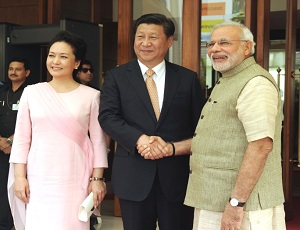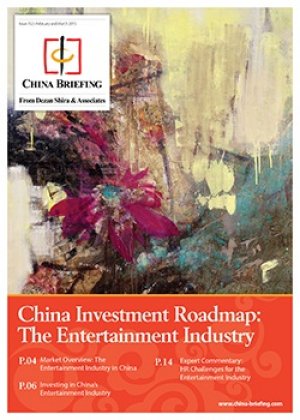Modi Visit to Fuel Chinese Investment into India

By Dezan Shira & Associates
Editors: Kimberly Wright and Adam Pitman
Chinese President Xi Jinping and Indian Prime Minister Narendra Modi orchestrated more than US $22 billion in trade and economic agreements during Modi’s recent three-day visit to China. The total dwarfs the conservative US $10 billion figure that the media floated at the start of Modi’s trip to China. How did they do it?
It’s not because Xi and Modi are friends. Despite smiling faces in the now infamous selfie, their countries are locked in territorial disputes across their shared border – which has led to competition between the counties in the South China Sea and Indian Ocean – and remain at-odds over their respective diplomatic and economic plans for Asia.
Modi’s trips to China as chief minister of Gujarat, Weibo account, and visit to Xi’s hometown may have helped soothe some tension. But no, Xi and Modi aren’t friends – they need each other. China needs India to diversify, and India needs China for foreign investment. Xi handed over his shopping list; Modi made the delivery to Xi’s doorstep.
![]() RELATED: What China Wants From India – Manufacturing Capacity
RELATED: What China Wants From India – Manufacturing Capacity
Deals Offer Insight for Investors
The more than US$22 billion in agreements show that the Chinese and Indian governments are able to build on the strength of relationships between private companies in China and India. Investors that have sat on the fence should review the trade and economic agreements arranged by Xi and Modi; the agreements offer key insights into where companies in China or India can find business opportunities across the border. The US$22 billion in agreements spanned telecommunications, information technology, renewable energy, manufacturing, infrastructure, steel, small and medium sized industries, as well as film and entertainment.
- Telecommunications
Bharti Airtel received US$2 billion in financing commitments from the China Development Bank, the largest bilateral commitment to a private Indian company. The Industrial and Commercial Bank of China (ICBC) also committed US$500 million to Bharti Airtel for telecommunications development in India.
- Information Technology
Guizhou, one of China’s least developed provinces, was the focus of several agreements involving the IT services industry. Infosys signed an agreement with the People’s Government of Qiannan Autonomous Prefecture to build a ‘China-India Information Service Industry Corridor’ in the southern part of Guizhou. The Guizhou provincial government also entered into an agreement with the Confederation of Indian Industry (CII) to promote the participation of Indian companies in IT projects.
- Renewable Energy
The trip produced two memorandums of understanding (MoUs) for photovoltaic (PV) industrial parks in India, one will be located at Mundra’s Special Economic Zone (SEZ) in Gujarat, India. In addition, two MoUs were signed for the development and manufacturing of solar cell modules, while Axis Energy Ventures India, Mingyang Wind Power and Global Wind Power Ltd signed a tripartite MoU for the research and development of renewable energies.
- Manufacturing
Chinese manufacturers signed several MoUs with Indian partners to shift production to India. Guizhou International Investment Corporation (GIIC) signed an MoU with India’s GMR group to develop a 2,000 acre industrial park at the Kakinada SEZ in Andhra Pradesh, India for Chinese manufacturers, while the China Association of Small & Medium Enterprise (CASME) signed a similar agreement for an SEZ in Gujarat. Autolite India Ltd. and Jinway Import and Export Co. also signed an agreement designed to support the manufacturing of high-tech capital goods in India.
![]() RELATED: India: Your China Plus One?
RELATED: India: Your China Plus One?
- Infrastructure
Xi and Modi both expressed their commitment to establishing the Asian Infrastructure Investment Bank to support regional infrastructural development in India. In addition, the China Development Bank will finance the development of an APL Mundra Power Plant, ICBC signed a MoU to support Infrastructure Leasing and Financial Leasing (IL&FS) in India, and China Huaneng Group signed an agreement for the development of 4,000 MW Thermal Power project in Nana Layja, Gujarat.
- Steel
China National Technical Import and Export Corporatio
n (CNTIC) entered into agreements for the development of an integrated steel project in Gujarat and a Bhushan Power and Steel Ltd. hot-rolled steel coil project. ICBC entered into an agreement with Jindal Steel and Power Ltd. for the development of several potential projects.
- Transportation
China Railway SIYUAN Survey & Design Group Co Ltd. and Aarvee Associates Architects Engg & Consultants Pvt Ltd. have formed a partnership to enhance cooperation in the railway sector. Proposed projects include developing the Chennai-Bengaluru-Mysore line in India and creating a high speed rail line from Delhi to Nagpur, India.
- Shipping
Mundra Adani Ports and the Guangzhou Port Authority agreed to establish a “sister port relationship” between the Mundra and Guangzhou ports. In addition, an offshore delivery center will be established in Dalian.
- Sister-City Relations
Three new sister-city relations were established between Chennai and Chongqing, Hyderabad and Qingdao, and Aurangabad and Dunhuang. In addition, sister-state/province relations were established between Karnataka and the Sichuan provincial government.
- Film and Entertainment
Eros Group and Shanghai Film Corporation signed an agreement to explore opportunities for developing the Indian and Chinese film markets. Doordarshan and China Central Television (CCTV) also entered into an agreement to encourage cooperation in programming and broadcasting. In addition, Eros Group and the China Film Group signed a bilateral co-production and distribution agreement – the first film to be produced under this agreement will be ‘Monk Xuan Zang’, a film about a 7th century Buddhist monk from China who travels along the Silk Road to India.
![]() RELATED: Following Chinese State Policy? Then Invest In India
RELATED: Following Chinese State Policy? Then Invest In India
A Win-Win for Modi and Xi
Going into the talks, Modi’s main goal was to channel Chinese investment into infrastructure and manufacturing. India currently has a US$37.8 billion trade deficit with China, and the government has announced an ambitious goal to reach US $900 billion in exports by 2020. This will require India’s exports to achieve a compound annual growth rate (CAGR) of 14 percent, which will depend on India’s ability to facilitate trade with countries like China.
The deals signed during the three-day visit confirm that Modi’s government is indeed able to bring Chinese investment into the country despite political and security tensions between the countries. In addition, MoUs such as plans for the development of industrial parks in Andhra Pradesh and Gujarat show that India is making progress towards becoming a manufacturing hub, which will be a key to creating jobs and lowering poverty rates across in India.
![]() RELATED: India’s FY 2015-16 Budget: Meaning and Implications for Foreign Investment
RELATED: India’s FY 2015-16 Budget: Meaning and Implications for Foreign Investment
China also walked away from the talks a winner. China has long been considered ‘the factory of the world,’ but as Chinese labor costs increase, the Chinese government has begun searching for ways to provide cheap, mass-produced goods to its growing middle-class. India’s demographics make it the perfect solution: India’s 450 million labor force is expected to grow to 900 million by 2025, while the average Indian worker can be employed for just 22 percent of the cost of a Chinese worker. Moreover, partnerships for Chinese investment in sectors like renewable energy and infrastructure perfectly align with the Chinese government’s goals to use infrastructural projects to cushion itself against a slowing economy.
Ahead of Modi’s visit to China, the media framed the trip as a reset for bilateral relations between China and India. However, instead of a reset, Xi and Modi found ways to scale up business-to-business relationships between China and India. The investment from China to India mirrors a strategy that many foreign companies in China are considering; as the Chinese market evolves, many foreign companies are realizing that China alone does not make an Asia strategy. With attractive market conditions, and a business friendly government, India increasingly looks poised to fill the void.
|
Asia Briefing Ltd. is a subsidiary of Dezan Shira & Associates. Dezan Shira is a specialist foreign direct investment practice, providing corporate establishment, business advisory, tax advisory and compliance, accounting, payroll, due diligence and financial review services to multinationals investing in China, Hong Kong, India, Vietnam, Singapore and the rest of ASEAN. For further information, please email china@dezshira.com or visit www.dezshira.com. Stay up to date with the latest business and investment trends in Asia by subscribing to our complimentary update service featuring news, commentary and regulatory insight. |
![]()
Using China’s Free Trade & Double Tax Agreements
In this issue of China Briefing, we examine the role of Free Trade Agreements and the various regional blocs that China is either a member of or considering becoming so, as well as how these can be of significance to your China business. We also examine the role of Double Tax Treaties, provide a list of active agreements, and explain how to obtain the tax minimization benefits on offer.
 Trading with India
Trading with India
In this issue of India Briefing, we focus on the dynamics driving India as a global trading hub. Within the magazine, you will find tips for buying and selling in India from overseas, as well as how to set up a trading company in the country.
China Investment Roadmap: The Entertainment Industry
In this special edition China Briefing Industry Report, we cast our gaze over the broad landscape of China’s entertainment industry, identifying where the greatest opportunities are to be found and why. Next, we detail some of the most important issues for foreign investors to be aware of, including legal, regulatory, and tax considerations specific to the industry. Lastly, we provide an insider analysis of the sector’s unique HR & payroll challenges.
- Previous Article The New Free Trade Zones Explained, Part III: Tianjin
- Next Article State by State: China and Rhode Island Trade































